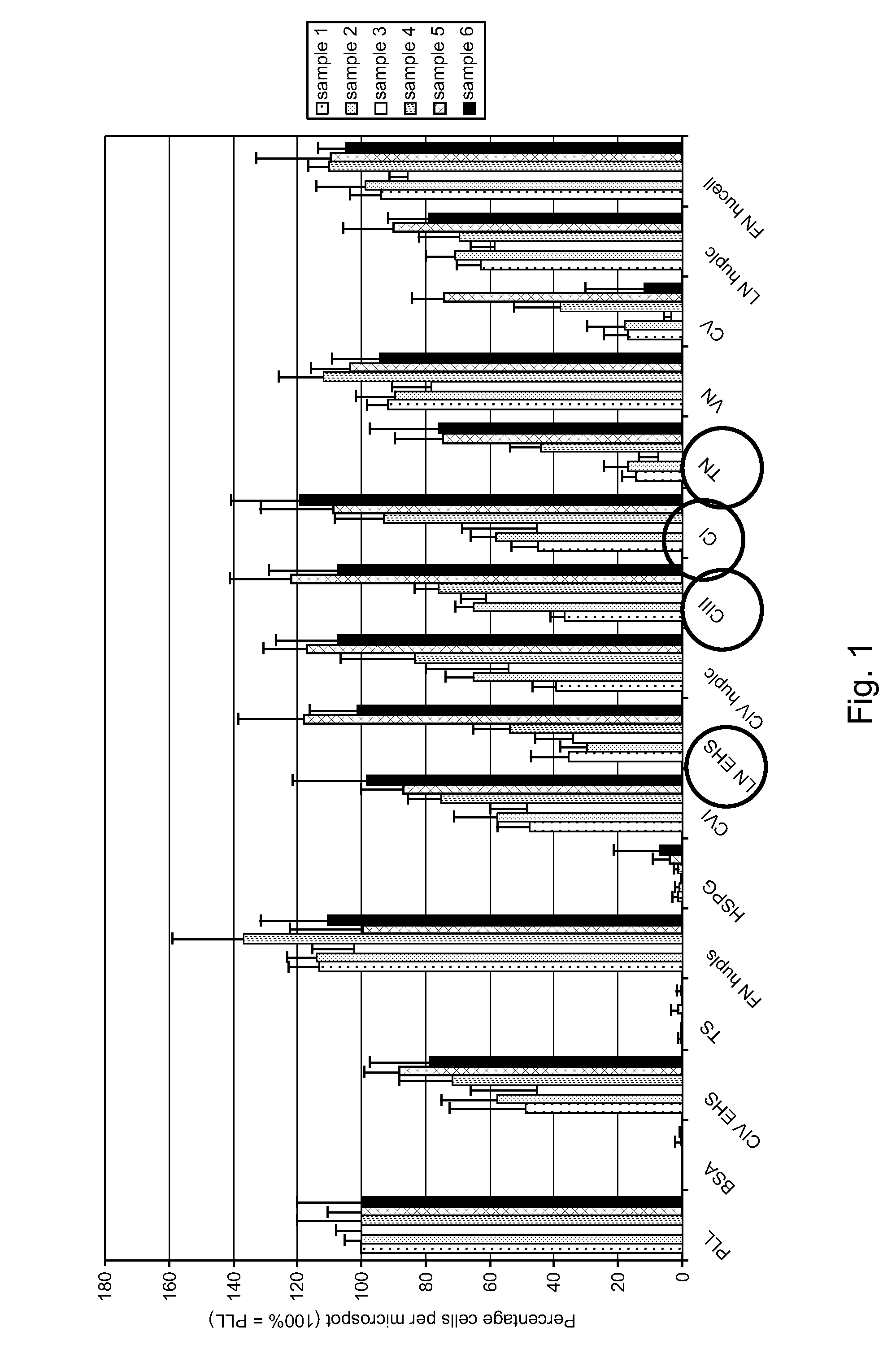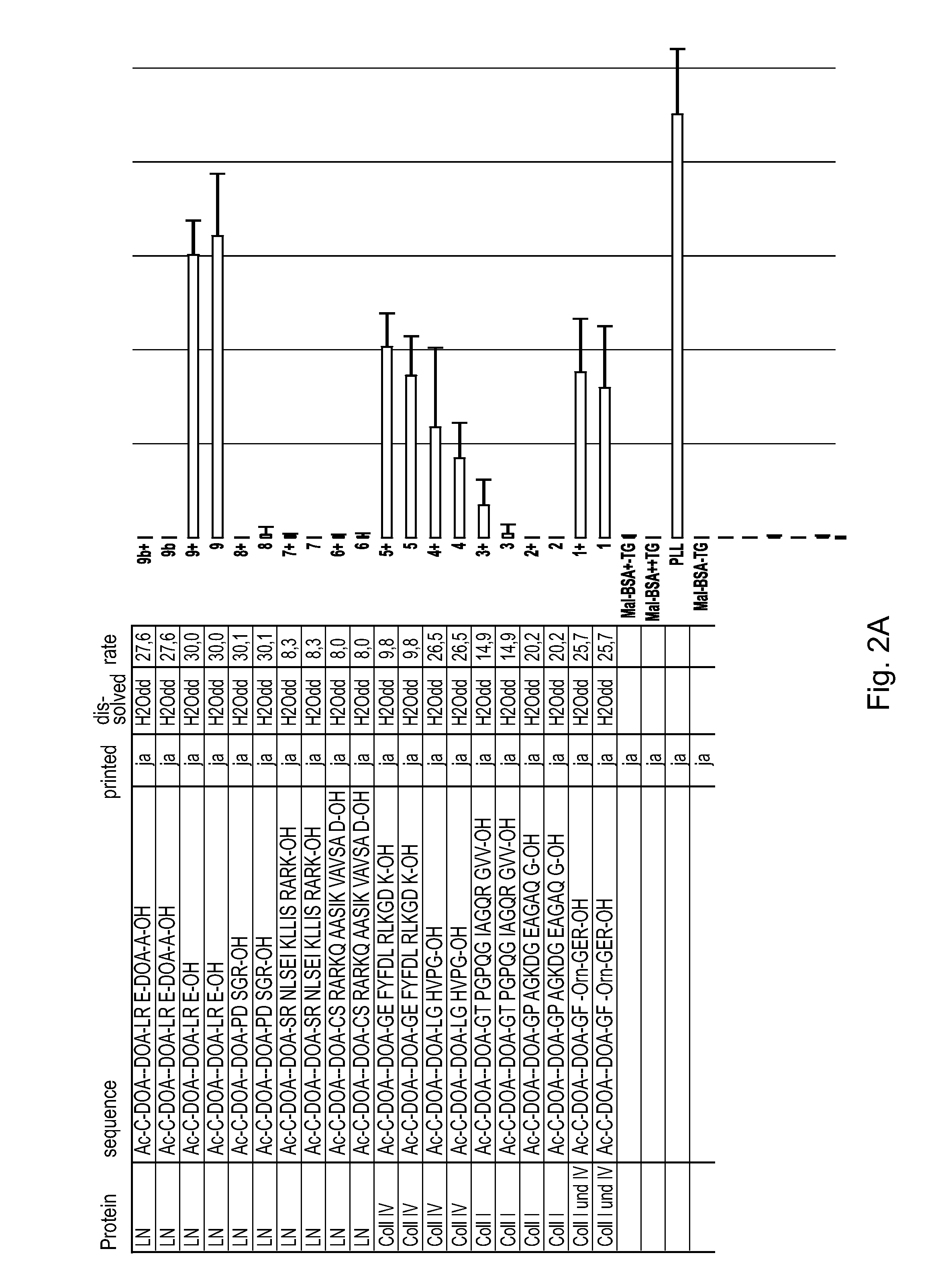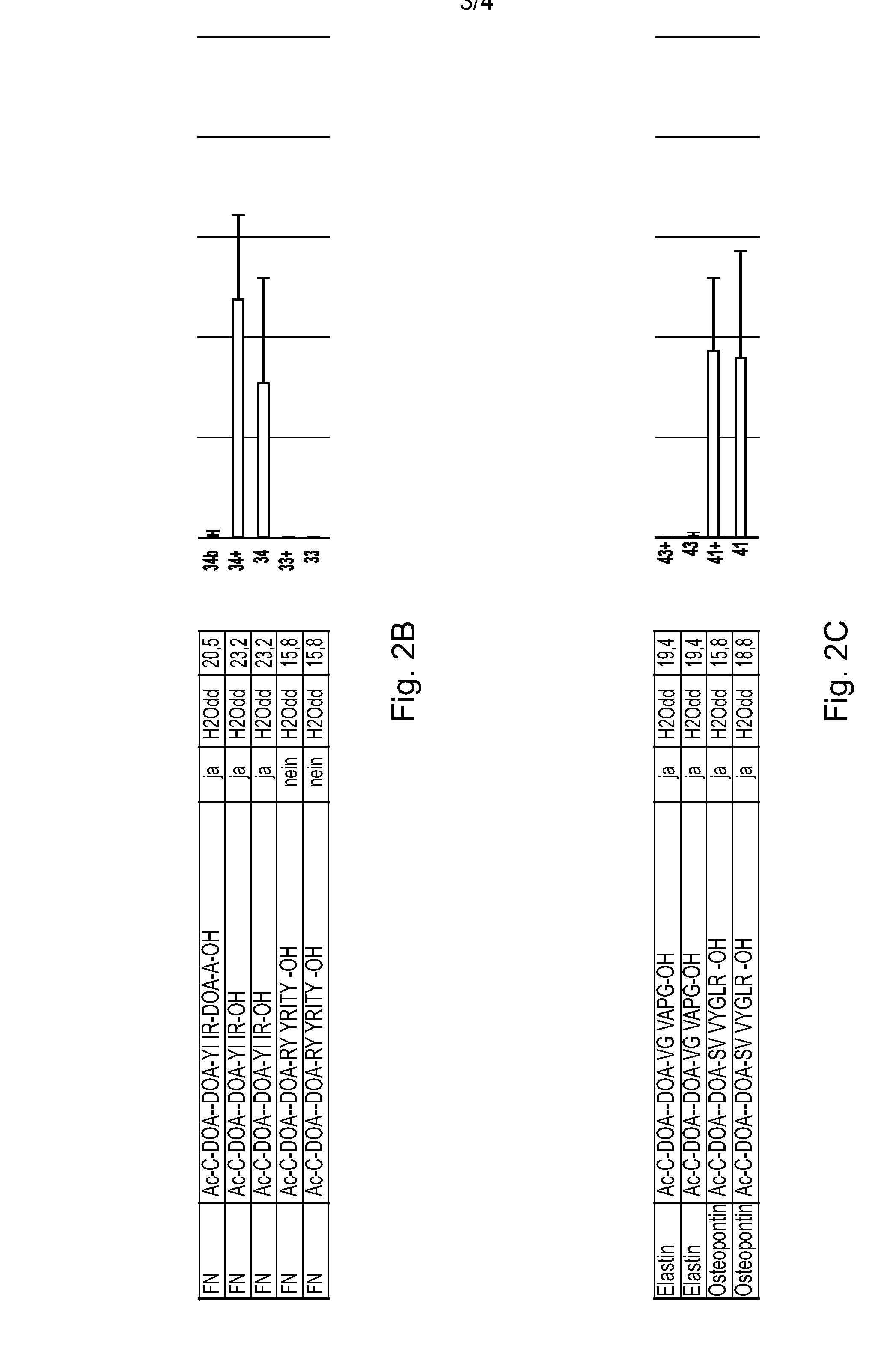Isolation of mesenchymal stem cells
- Summary
- Abstract
- Description
- Claims
- Application Information
AI Technical Summary
Benefits of technology
Problems solved by technology
Method used
Image
Examples
example 1
[0078]The adherence of human mesenchymal stem cells (MSC, samples 5 and 6 in FIG. 1) and human fibroblasts (samples 1 to 4 in FIG. 1) on matrix proteins was investigated in a comparative test. The investigation was carried out using a chip (Multiple Substrate Array (MSA®)), on which the proteins were immobilized. The procedure used as such was as described in Kuschel et al., “Cell adhesion profiling using extracellular matrix protein microarrays”, Biotechniques 40: 523-531 (2006).
[0079]MSCs were enriched from bone marrow by density gradient centrifugation, cultivated as an adherent population in MSC-expansion medium, and harvested. The differentiation potential was tested on an aliquot and adipogenic, chondrogenic and osteogenic differentiation was confirmed. Therefore the cells fulfill the physiological requirements for MSCs (M. Dominici et al. 2006, Cytotherapy, 8: 315 ff). It is to be understood that MSCs from other tissues can also be used, for example fat tissue or any other ti...
example 2
[0084]The adhesion of cells to peptides was also measured using the MSA™ technology (see Kuschel et al., 2006) as above in example 1. Instead of the extracellular matrix proteins, however, peptides coupled to bovine serum albumin were printed in the form of microarrays (8×8 microspots) onto the nitrocellulose layer, and then the remaining surface was sealed. For incubation with cells, small silicone chambers were placed on the coated slides, and incubated with MSCs or fibroblasts. After incubation for two hours, the non-adherent cells were washed away.
[0085]Adherent cells were made visible on the white nitrocellulose film by staining with Coomassie Blue and were evaluated in a motorized photomicroscope: the number of blue cells or the color intensity per spot is measured and transferred to tables for evaluation.
[0086]Evaluation of these arrays using the semi-automatic photomicroscope gave the relative binding strength on PLL (standardized to 100%, positive control) and BSA (standard...
PUM
| Property | Measurement | Unit |
|---|---|---|
| Fraction | aaaaa | aaaaa |
Abstract
Description
Claims
Application Information
 Login to View More
Login to View More - R&D Engineer
- R&D Manager
- IP Professional
- Industry Leading Data Capabilities
- Powerful AI technology
- Patent DNA Extraction
Browse by: Latest US Patents, China's latest patents, Technical Efficacy Thesaurus, Application Domain, Technology Topic, Popular Technical Reports.
© 2024 PatSnap. All rights reserved.Legal|Privacy policy|Modern Slavery Act Transparency Statement|Sitemap|About US| Contact US: help@patsnap.com










